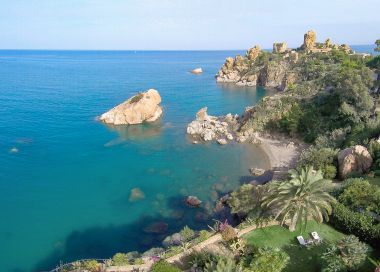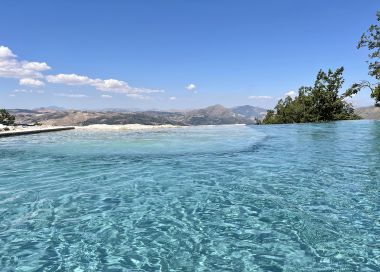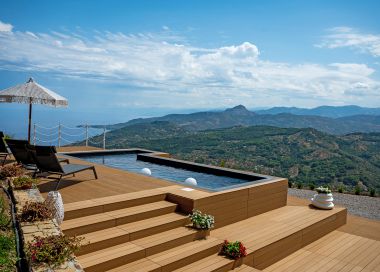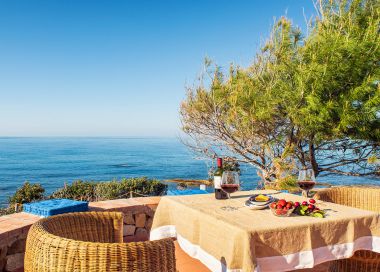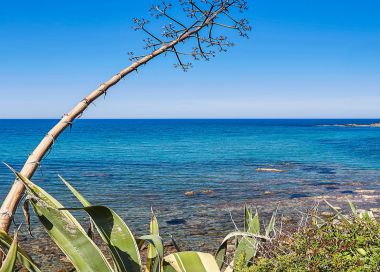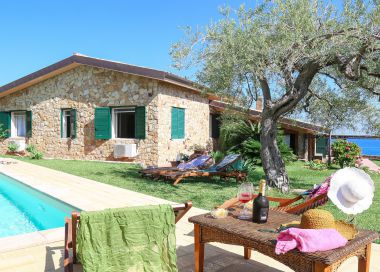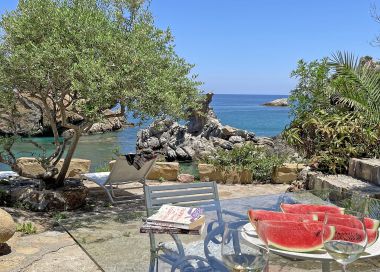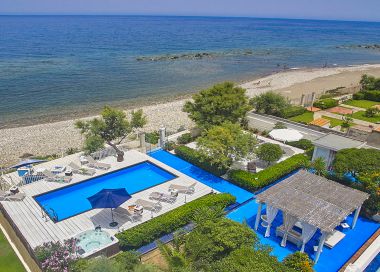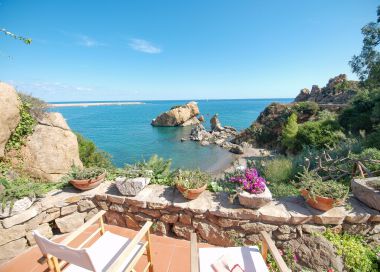Gratteri
Gratteri, picturesque village in the Madonie Park
This is a picturesque village within the Madonie mountain range of around 1000 inhabitants, at a height of 650 metres above sea level and surrounded by a luxuriant wood that overlooks the bay of Cefalù: the forest of the Madonie, the second highest mountain range in Sicily after Mount Etna. The first human settlement dates back to the IX century and it is of Arab origins. Then in 1059 the Normans arrived, who were responsible for the construction of numerous abbeys, such as the Abbey of San Giorgio, of which some decorations still remain similar to the ones from the cathedral of Cefalù, as well as the church’s perimeter walls showing a three-nave basilica plan. From the XV century onwards, Gratteri was under the control of the Ventimiglia family who extended the old medieval centre, comprising the castle surrounded by the ancient defensive wall structure. In Gratteri one can experience the local and authentic atmosphere of ancient rural Sicily. Here, far away from other crowded and tourist locations, one can discover its quiet village life and ancient traditions and it may happen that while you delight in Gratteri’s excellent gastronomy sitting in a local restaurant, you realise you may actually be its only warmly cuddled customers. The village balances well the conservation of its traditions and the moderate and clever opening up of an eco-sustainable tourism. It is not by chance that some big names in show business (amongst whom the journalist Lilli Gruber) have become the owners of some ancient houses in the city centre, where they go to spend their holidays. Today the castle is no more visible but its medieval arrangement remains. At the heart of the village is Corso Umberto where lies a cathedral dedicated to San Michele Arcangelo. Built very close to the castle structure by the Ventimiglia family, this was probably their private chapel. The inscription on one of its bells records the date of 1390. Within a treasured silver reliquary inside the cathedral are four Thorns from Jesus Christ’s Crown. This priceless religious treasure is much venerated by the people of Gratteri who celebrate a festival held on the first Sunday in May each year. Count Roger of Altavilla himself transported the thorns from Jerusalem. In 1648, to honour the Holy Thorns the Baron Lorenzo Ventimiglia had an opulent marble altar built together with a sturdy iron case. On the sides of the case were two angels (which have not reached us unfortunately), one of which featured Gratteri’s coat of arms representing a dove drinking from a spring surrounded by the inscription “Tuere Nobile Gratterium.” Today, both the altar and its case are kept in the appropriately named Chapel of the Holy Thorns inside the Chiesa Madre. Until a few years ago, the people from Gratteri (“the Gratteresi”) used to display the Holy Thorns when natural disasters such as strong Sirocco winds or severe drought occurred so that such plagues may cease. One of the most beautiful places to visit around here is a charming cave named “Grattara,” to which the origins of the name Gratteri are likely to be attributed. The cave lies at the foot of Pizzo di Pilo (more than 1000 metres above sea level) and from here one can enjoy magnificent views of the surrounding area. The access route is rather sinuous but practicable overall. The route finally opens up to a luxuriant pine forest that leads to a small hill named “lazzu di vuoi” (oxen’s resting place). From here a short plain road leads directly to the cave. At the centre of the cave is a big stone crater which has been formed by the constant erosion of dripping waters. Access to the spring is through a modest natural staircase. In this area the splendid and rare Abies Nebrodensis can be found, an endemic relict species dating back to glaciation period. The Grattara cave is an essential part of Gratteri’s history and folklore tradition because, according to legend, the cave was the shelter of the Befana (“a vecchia”) who used to slide down Gratteri’s chimneypots on the last night of each year enveloped in a white sheet to load children’s stockings with gifts. Even today, the Grattara Cave is the final destination of an end-of-the-year torchlight procession that starts from the main square and ends with the burning of an old woman puppet amid folk songs and music. Another ancient and local tradition is held on 18th March, the night preceding the festival of San Giuseppe. In Gratteri, as in other places in Sicily, it is still a custom to light fires and torches on such occasions: these are called “i vampi” and are huge hips of wood that people gather together in square-like spaces and that are lit at the approaching of the procession Saint. The flames of these fires are called “luminarie.” When all the wood has burnt the charcoal is used as barbecue to grill sausages and artichokes that are offered to all the people around.





